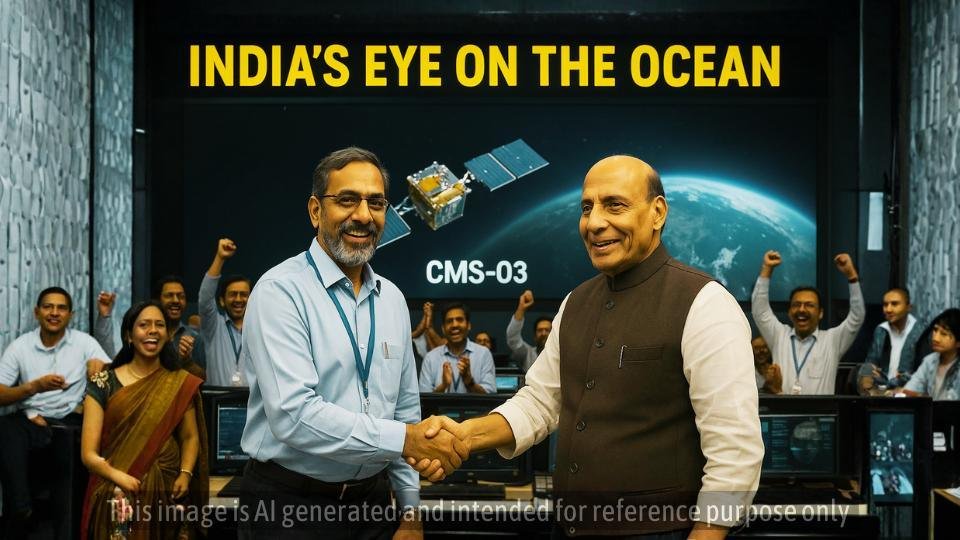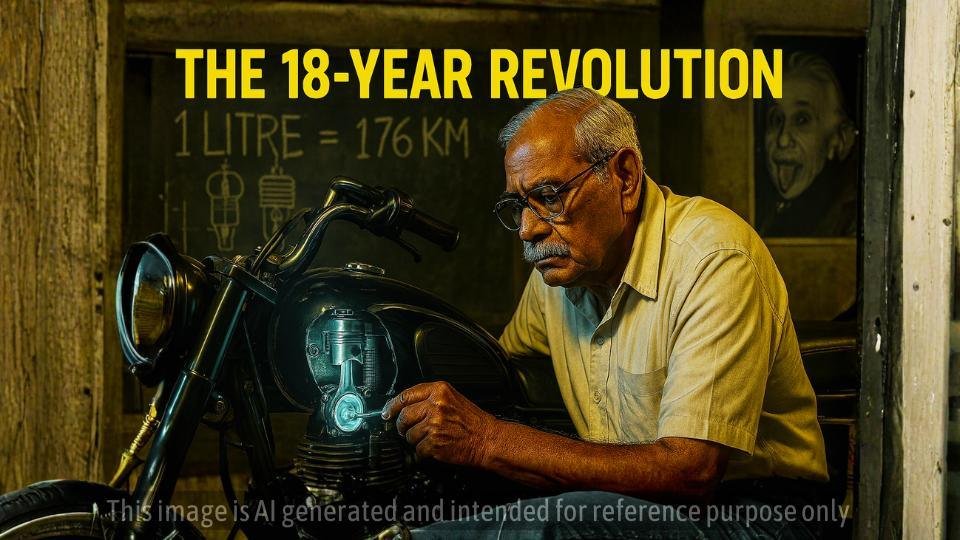कृपया इसे हिंदी में पढ़ने के लिए यहाँ क्लिक करें
A New Chapter in India’s Defence and Space Prowess
In a historic moment for the nation, the Indian Space Research Organisation (ISRO) has successfully launched its heaviest-ever communication satellite, the CMS-03 (also known as GSAT-7R), from Indian soil. This monumental achievement not only marks a significant leap in our space communication capabilities but also provides an unprecedented boost to the operational strength of the Indian Navy.
This launch ends India’s reliance on foreign space agencies for sending its heavy satellites into orbit, heralding a new era of self-reliance, or ‘Aatmanirbhar Bharat’, in space technology.
The Star of the Show: The CMS-03 Satellite
Weighing a colossal 4,400 kilograms (4.4 tonnes), the CMS-03 is a state-of-the-art multi-band communication satellite. Its primary objective is to strengthen India’s maritime and defence communication network, with the Indian Navy being its main user.
Designed to operate for a mission life of at least seven years, the satellite will provide secure, encrypted, and reliable communication links across the vast expanse of the Indian Ocean Region (IOR). This capability is essential for real-time coordination between naval ships, submarines, aircraft, and coastal command stations, significantly enhancing India’s blue-water naval power.
The CMS-03 is set to replace the decade-old GSAT-7 “Rukmini” satellite, which was India’s first dedicated military satellite launched in 2013 and has now reached the end of its operational life.
The Powerhouse Behind the Launch: The LVM3 Rocket
This ambitious mission was made possible by India’s most powerful rocket, the Launch Vehicle Mark-3 (LVM3), formerly known as the GSLV Mk-III. This launch was the fifth operational flight for the LVM3, the same rocket that so brilliantly carried the Chandrayaan-2 and Chandrayaan-3 missions to the Moon.
Previously, India depended on foreign launchers, like Europe’s Ariane-5, for satellites weighing over four tonnes. By successfully lifting the 4.4-tonne CMS-03 to a Geosynchronous Transfer Orbit (GTO), ISRO has demonstrated its indigenous capability to handle such heavy payloads, strengthening its profile in the highly competitive global commercial satellite launch market.
Mission Breakdown: From Earth to Orbit
The journey of the CMS-03 satellite is a marvel of precision engineering:
- Launch & Ascent: The LVM3 rocket lifted off from the Satish Dhawan Space Centre in Sriharikota, powered by its twin S200 solid rocket boosters.
- Staging: Following the solid boosters, the core liquid stage and the cryogenic upper stage fired sequentially to propel the satellite towards its intended orbit.
- Orbit Raising: After separating from the rocket, the CMS-03 satellite will use its own onboard propulsion system to perform a series of manoeuvres, raising its orbit to finally settle into a geostationary orbit, approximately 36,000 km above the Earth.
- Operational Phase: Once in position, the satellite will deploy its solar panels and antennas. After a thorough testing phase, it will be ready to serve the nation, enhancing communication coverage for both defence and civilian networks.
Strategic & Geopolitical Impact: Why This Launch Matters
The successful launch of CMS-03 is a powerful statement. It enhances India’s capacity for independent and secure defence communications, a crucial element for maintaining dominance and security in the Indian Ocean. In a region where geopolitical rivalries are expanding, this satellite acts as a strategic counterweight, reinforcing India’s status as a formidable space-faring power with dual-use (civil and military) space infrastructure.
Social Message: Today, we celebrate not just a rocket launch, but the launch of new possibilities. This achievement is a testament to the hard work and brilliance of our scientists at ISRO. It reminds us that when we look to the stars with determination and work together, there is no limit to what we can achieve. This satellite will not only protect our seas but also improve services like remote connectivity and disaster management for our citizens. It is a true symbol of science serving the nation.






Leave a Reply